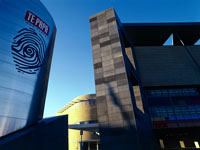 Wellington OverviewThe capital city of New Zealand, Wellington is located at the
southern tip of the North Island. It is situated on a splendid
harbour and hemmed in by steep hills, creating a compact inner city
centre with a mix of historic and modern buildings. It is the
second largest city in the country, the energetic centre for
culture and arts, and the entertainment, commercial and political
capital of New Zealand with an air of pronounced sophistication and
vibrancy. Apart from its importance as the capital, it is the main
departure point for the South Island. Also called 'Windy Wellington', it lives up to its name
especially in winter when the lashing winds from the Cook Strait
whistle through the wind funnels created by the high-rise buildings
of the central business district. The bustling, pretty waterfront
area is a sheltered refuge with a graceful promenade, featuring
shops, restaurants and various leisure activities. Brightly
coloured sails scud across the harbour, the reliable wind providing
excellent sailing and windsurfing opportunities. The ferry to the
picturesque Days Bay, one of Wellington's best swimming beaches,
affords excellent views of the city from the water. Dominating the
waterfront is the Te Papa Museum, the pride and joy of the nation
that embodies the quintessence of New Zealand and its people. In the city centre the Parliamentary District is the
architectural masterpiece of Wellington, including the Old
Government Building, the second largest wooden building in the
world; the unmistakable modernist Beehive, the executive offices of
Parliament; Parliament House and the Victorian Gothic National
Library. The cable car takes people up to the Botanic Gardens for vistas
of the city centre and across the harbour to the Hutt Valley, one
of the scenic locations used in the filming of 'Lord of the Rings'.
Another film site is Mount Victoria, offering sweeping panoramic
views of the city and its suburbs, the surrounding hills and bays,
and the harbour. |